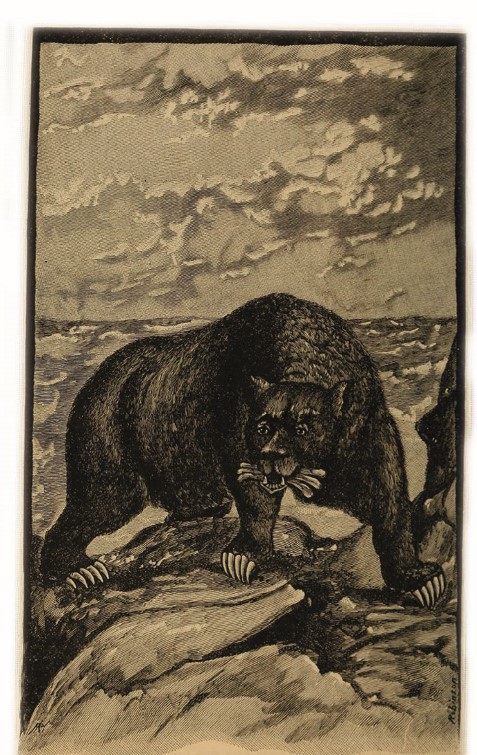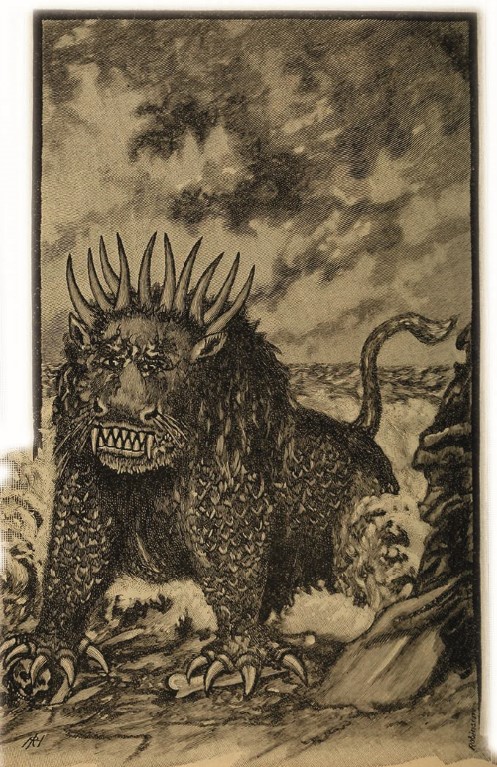PART 2.
DANIEL CHAPTER 2 tells of an extraordinary dream of Nebuchadnezzar King of Babylon. He saw a great image made of four metals—the head of gold, chest and arms of silver, belly and thighs of brass, and legs of iron. The prophet Daniel explained that this was a vision of Middle East history in advance (vs. 36–44).
The image’s head represented Babylon—‘You are the head of gold’ (v. 38). The interesting thing is that we don’t have to depend on a knowledge of history to identify the other kingdoms—they are named for us later in Daniel’s prophecy.
Chapter 7 tells of another dream—this time a dream Daniel himself had. Daniel saw four great beasts rising out of the Mediterranean Sea. They were all wild, aggressive, destructive animals. Beasts in Bible imagery often represent warlike nations, usually fighting against God’s purpose. The fact that they came out of the Mediterranean indicates that they all had designs against the land of Israel—hence God’s particular interest in them.
So, the four beasts parallel the four metals of the image. The first beast was a lion with eagle’s wings; the second beast was a bear with three ribs in its teeth, which raised itself up on one side; the third beast was like a leopard, with four heads and four wings; and the fourth indescribable beast had iron teeth and ten horns.
The first beast in Daniel 7 (which corresponds with the head of gold in Daniel 2) can be equated with Babylon, which is portrayed in the Bible as a lion: ‘Israel is a hunted sheep driven away by lions. First the king of Assyria devoured him, and now at last Nebuchadnezzar king of Babylon has gnawed his bones’ (Jeremiah 50:17). Interestingly, the Babylonians were fond of representing themselves with the lion symbol.
The second beast in Daniel 7 was a bear, and this represented the Medes and Persians. History shows that these two powers joined forces to conquer the Babylonian empire. As the bear raised itself up on one side, so the Persians became dominant in the alliance. The three ribs in its mouth could represent the three administrative areas of the empire (see Daniel 6:2). This empire was represented by the silver chest and arms in chapter 2.
After Persia came the Greek empire, which is fittingly represented by the leopard, famed for its speed. The Greeks, led by Alexander the Great, took the world by surprise with the speed of their conquests. But Alexander died in his early 30s, and his empire was split between four of his generals—represented by the four heads and four wings. The Greeks were represented by the belly and thighs of bronze in chapter 2. As it happens, the Greeks were well known for their bronze armour.
The fourth beast was ‘terrifying and dreadful and exceedingly strong. It had great iron teeth; it devoured and broke in pieces and stamped what was left with its feet’ (Daniel 7:7). History shows that this was the Roman empire. In chapter 2 it’s represented by the image’s legs of iron. The Roman empire was split into east and west sections. The Romans favoured iron for their armour.
How did Daniel know all these things about the empires which would unfold in the centuries after his life?
In the next chapter, Daniel sees a vision of two more beasts. First he sees a ram rampaging over the earth; then a goat charges it and tramples it (8:1–8). Later in the chapter this vision is explained—it’s the Persian empire being taken over by the Greek empire (vs. 18–26). Again, the details fit: the goat has a great horn (Alexander the Great) which is broken off and replaced by four horns (his generals), and out of one of them a little horn emerges which sets itself up against the host of heaven, takes away the burnt offering and overthrows the sanctuary (vs. 9–12). This turns out to be a description of Antiochus Epiphanes, Seleucid king in the 2nd Century bc. He arose from the empire of one of Alexander’s four generals, and is famous for persecuting the Jews and desecrating the temple in Jerusalem.
If you love history, you’ll be fascinated by Daniel 11, which is a detailed account (told in advance) of the struggle between the warring Greek generals leading up to and including Antiochus Epiphanes’ reign. How did Daniel know all these details?
Nebuchadnezzar was under no illusions about the explanation—he recognised the power of God at work. ‘The king answered and said to Daniel, “Truly, your God is God of gods and Lord of kings, and a revealer of mysteries, for you have been able to reveal this mystery”’ (Daniel 2:47).
J Hamilton Wilson
To be continued.




